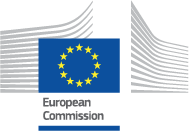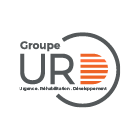WORKING WITH DG ECHO AS MEMBER STATES' SPECIALISED AGENCIES | 2021 - 2027
6. GENDER AND AGE MARKER
2. Project Data Overview By Country
3. Humanitarian Organisations In The Area
4. Needs Assessment And Risk Analysis
12. Visibility, Communication And Information Activities
13. Financial Overview Of The Action
14. Requests For Alternative Arrangements
15. Administrative Information
6.1 GENDER AND AGE
Marker criteria are only met, if ALL sub-criteria are sufficiently met (see the Gender-Age Marker Toolkit and assessment card).
Information on the Marker should be included throughout different sections of the Single Form. If core information related to the four Marker criteria is only included in the below section, but not in other sections of the Single Form, the criteria will not be considered sufficiently met by DG ECHO.
Is the marker applicable?
The Marker is applicable to humanitarian actions delivering assistance to affected communities.
The Marker is not applicable only in FEW specific cases, namely actions that do not deal directly with affected populations.
Examples include air services for humanitarian workers or goods, emergency telecommunications, or capacity-building projects targeting only humanitarian organisations or workers. Another example is procurement, transport and storage of goods, as long as this does not include distribution, the choice of the location for storage or the choice of the goods.
Q1: Does the proposal contain an adequate and brief gender and age analysis?
You can answer YES, only if the following has been explained in the Single Form:
(1) impact of the crisis on women, girls, boys and men,
(2) description of roles and access to/control over resources,
(3) their specific needs,
(4) identification of discrimination/lack of access to assistance and protection,
(5) vulnerabilities and capacities of the different gender and age groups, and
(6) any specifically vulnerable groups with specific needs.
Information should be included in the sections “problem, needs and risk analysis” and “beneficiaries”.
Q2: Is the assistance adapted to the specific needs and capacities of different gender and age groups?
You can answer YES only if, based on the gender-age analysis' findings, there is a systematic/coherent adaptation of assistance to different gender and age groups. Concrete examples MUST be provided. If the action targets specific gender and/or age groups, specific needs must be justified.
Information should be included in the section “logic of intervention“.
Q3: Does the action prevent/mitigate negative effects?
You can answer YES only if information on how negative effects potentially caused by the action (e.g. SEA) will be PREVENTED and how gender or age related risks created by the context (e.g. discrimination) will be MITIGATED.
Information should be included in the "risk analysis" and the "logic of intervention".
Q4: Do relevant gender and age groups adequately participate in the design, implementation and evaluation of the action?
You can answer YES only if
1) a participatory approach of diverse gender and age groups and active participation of affected populations in design, implementation, monitoring and evaluation; Adequate representation of different gender and age groups; for targeted actions: engagement with other critical stakeholders and; Adequate formats, timing, locations, facilitation techniques and contents to enable the effective participation of all relevant gender and age groups) and
2) Adequate team composition are demonstrated(Mixed humanitarian teams including male and female members of different ages; Team members with experience in integrating gender and age concerns into humanitarian aid).
Information should be provided in the Single Form section “involvement of beneficiaries”.
Based on the answers, each Action will be marked with a score (0-2). The mark is calculated automatically. Remember the mark assess results and not efforts. The mark will be attributed automatically using the following scale:
| The action does not deal directly with affected populations | N/A |
| The action meets none or only one criteria | 0 |
| The action meets 2 or 3 criteria | 1 |
| The action meets all 4 criteria | 2 |
ADDITIONAL COMMENTS AND CHALLENGES
This section should ONLY be used to provide additional information on measures to prevent or mitigate potential negative effects, challenges and limitations encountered when trying to integrate gender and age into the action, and measures for integrating gender and age that would have been appropriate but were not or could not be taken for a certain reason.
If core information related to four Marker criteria is only included in the below section, but not in other sections of the Single Form, the criterion will not be considered sufficiently met by DG ECHO.





